Abstract
1. Thiamine or the pyrimidine moiety of thiamine added in excess to a growing culture of Salmonella typhimurium LT2 repressed subsequent thiamine synthesis in non-growing organisms. 2. A mutant unable to convert added pyrimidine moiety into thiamine was not repressible by the pyrimidine, showing that thiamine, not the pyrimidine, was the repressor. 3. Thiamine repression occurred at 40mμg. of thiamine/mg. dry wt. or above and de-repression occurred at 30mμg. of thiamine/mg. dry wt. or below. 4. Thiamine controlled the pyrimidine and thiazole pathways at the same concentration and to the same extent. 5. Biosynthesis of the thiazole moiety had, in contrast with biosynthesis of the pyrimidine moiety, an additional feedback inhibition control that allowed utilization of the exogenous thiazole. 6. The enzymes joining the pyrimidine and thiazole moieties were repressible by high concentrations of thiamine. 7. Thiamine was rapidly converted into thiamine pyrophosphate and this appeared to be the active repressor. 8. Theoretical aspects of control of converging pathways are discussed.
Full text
PDF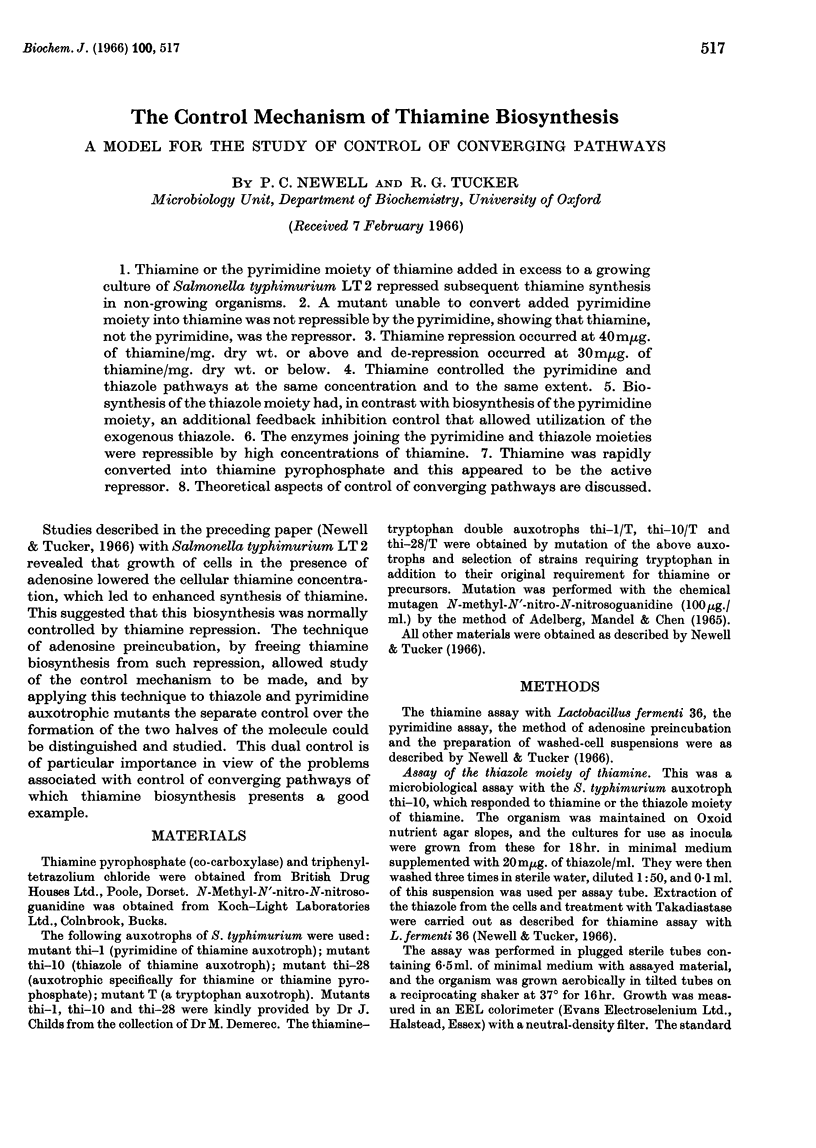
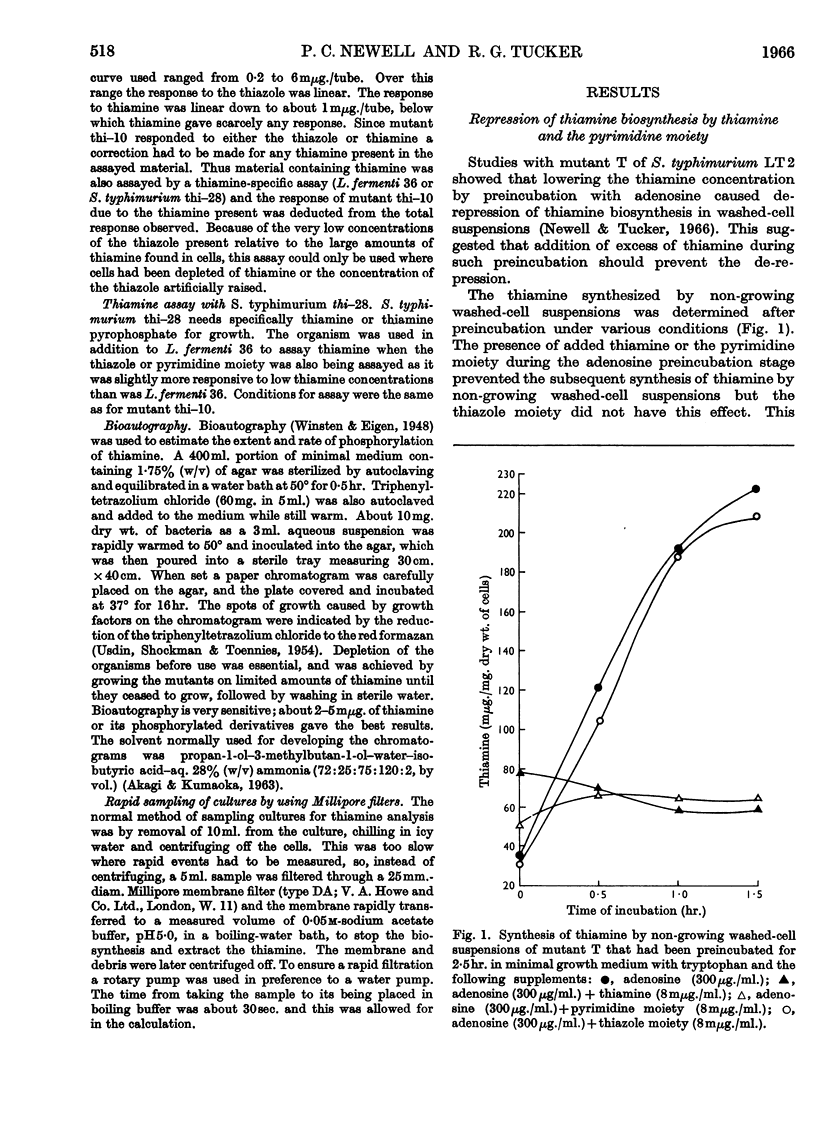


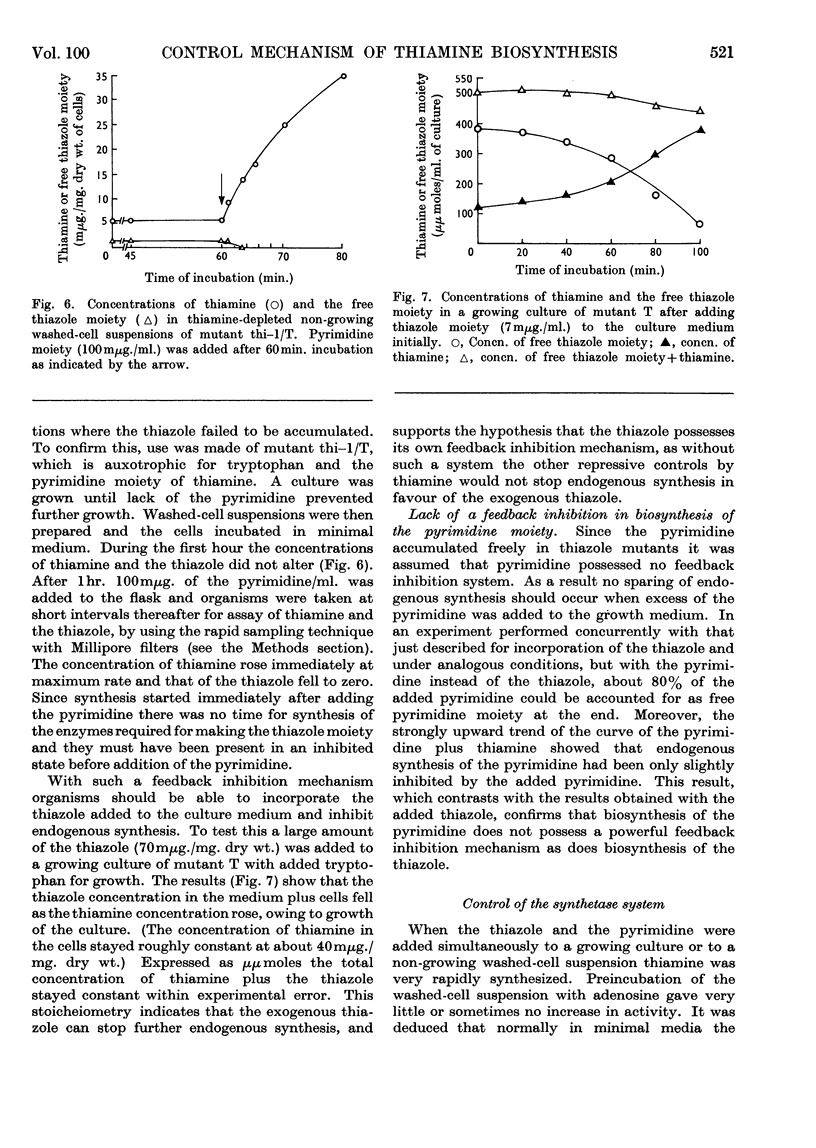
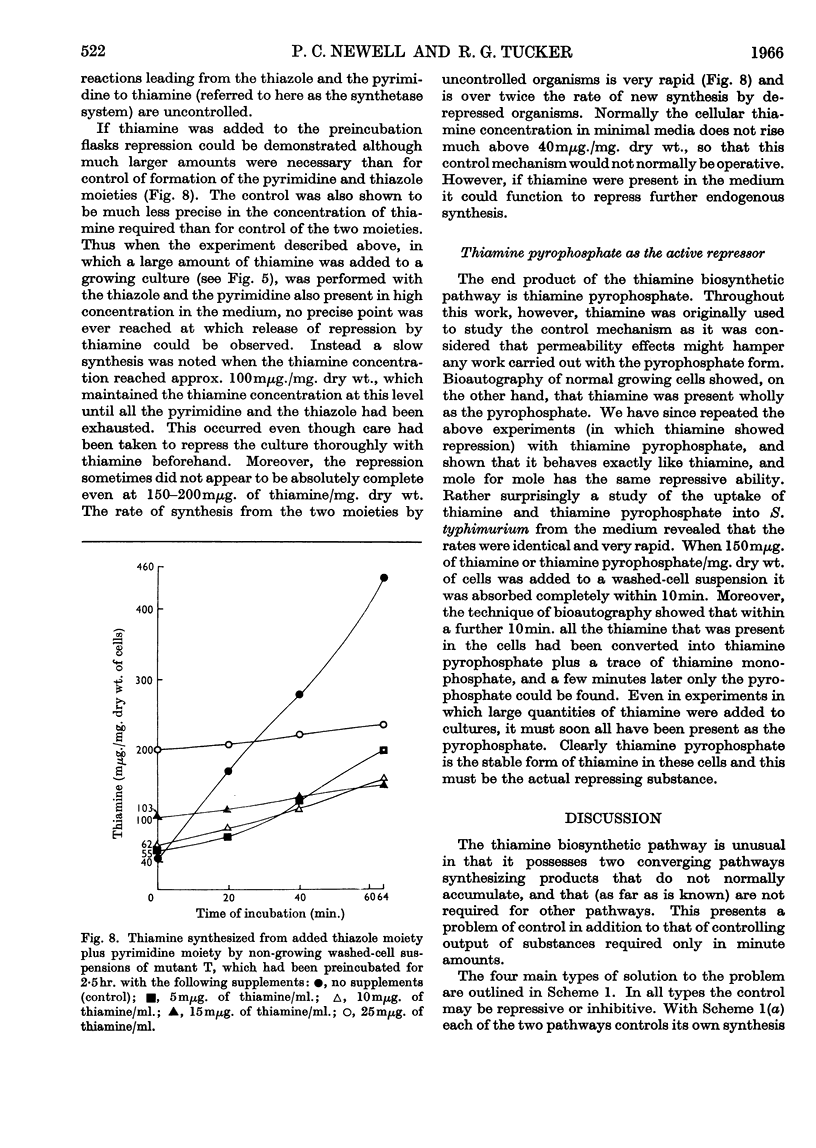
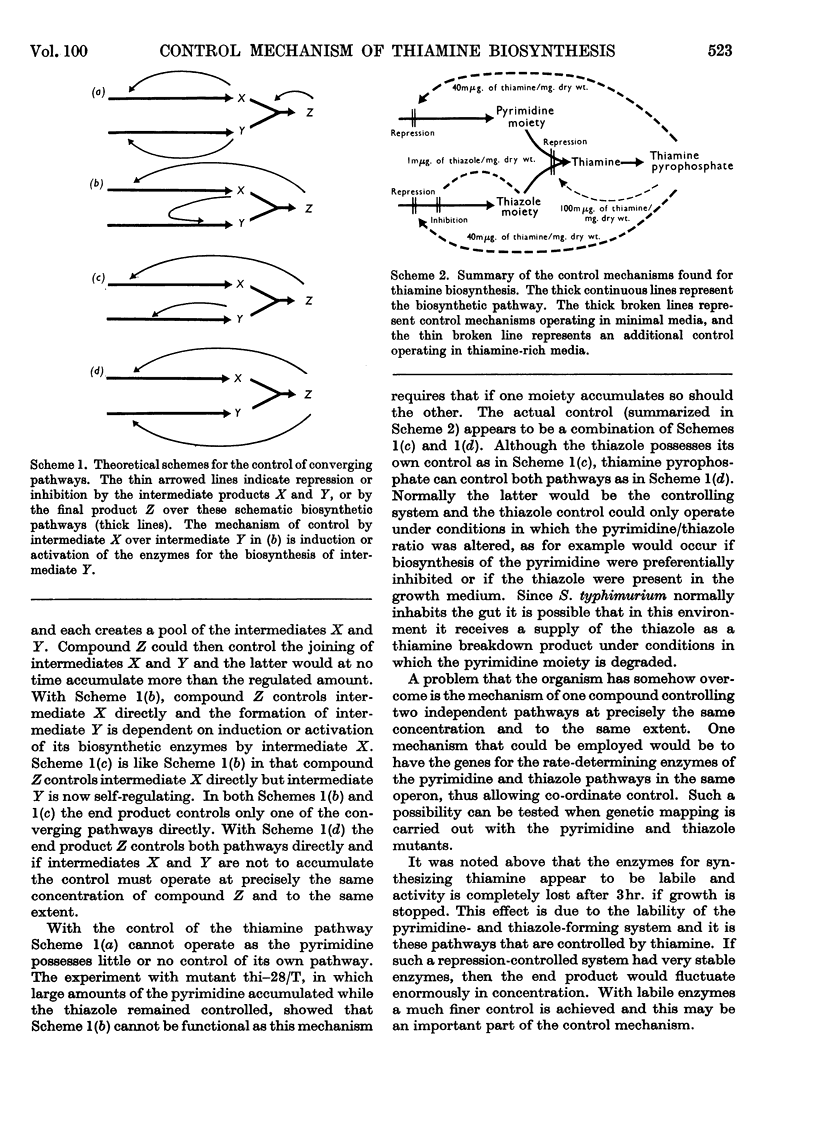
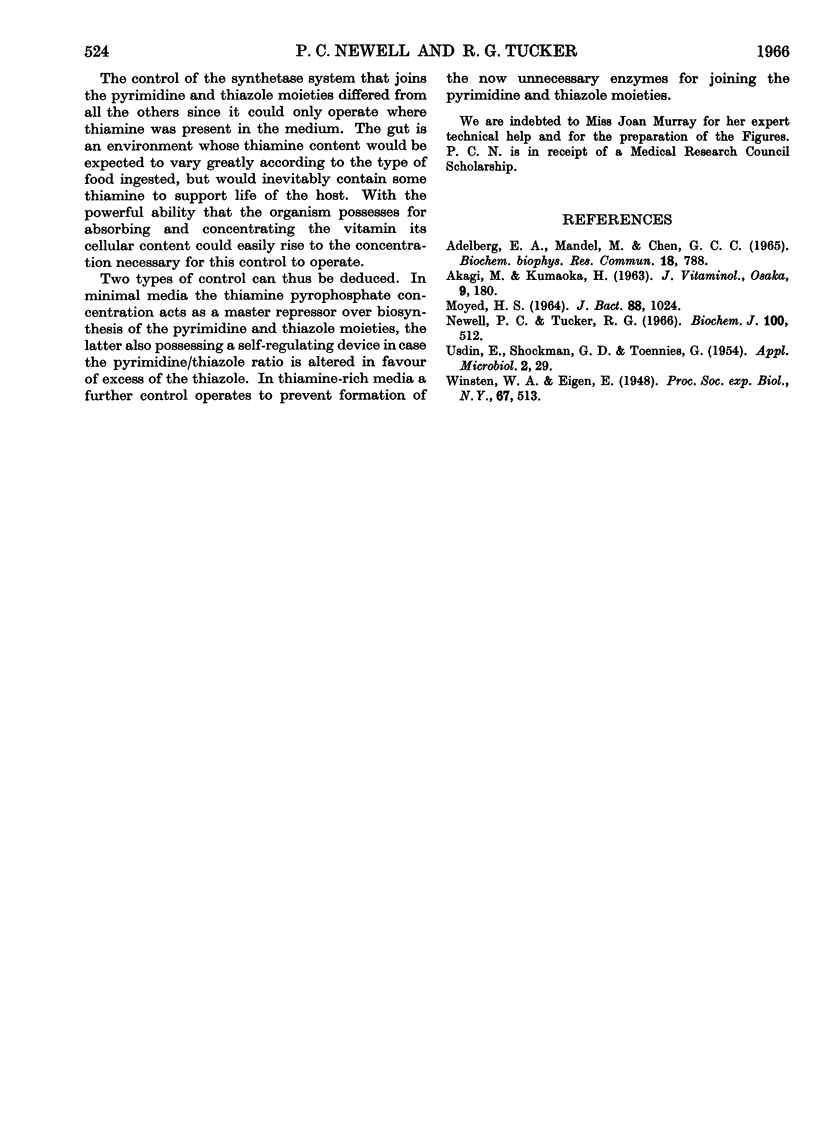
Selected References
These references are in PubMed. This may not be the complete list of references from this article.
- MOYED H. S. INHIBITION OF THE BIOSYNTHESIS OF THE PYRIMIDINE PORTION OF THIAMINE BY ADENOSINE. J Bacteriol. 1964 Oct;88:1024–1029. doi: 10.1128/jb.88.4.1024-1029.1964. [DOI] [PMC free article] [PubMed] [Google Scholar]
- Newell P. C., Tucker R. G. The de-repression of thiamine biosynthesis by adenosine a tool for investigating this biosynthetic pathway. Biochem J. 1966 Aug;100(2):512–516. doi: 10.1042/bj1000512. [DOI] [PMC free article] [PubMed] [Google Scholar]
- USDIN E., SHOCKMAN G. D., TOENNIES G. Tetrazolium bioautography. Appl Microbiol. 1954 Jan;2(1):29–33. doi: 10.1128/am.2.1.29-33.1954. [DOI] [PMC free article] [PubMed] [Google Scholar]


